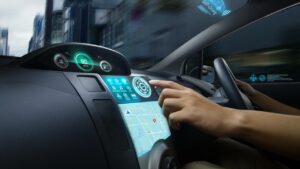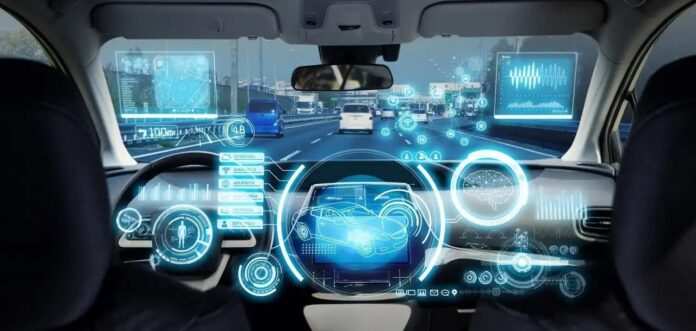The field of autonomous vehicles (AVs) is undergoing a significant transition, largely due to the swift progress made in Artificial Intelligence (AI). These advancements go beyond self-driving cars to include trucks, drones, and other types of transportation. The incorporation of artificial intelligence (AI) into driverless cars is a paradigm change that might completely alter how we view and engage with transportation.
The Evolution of AI in Autonomous Vehicles
The foundation of AV progress has been artificial intelligence (AI), which has made previously unachievable levels of precision, flexibility, and intelligence possible. Important applications of AI in AVs include:
Machine Learning and Data Processing: The data that AVs receive from sensors, cameras, and GPS systems is interpreted by machine learning algorithms. Vehicles can navigate, avoid obstacles, and make judgments in real time with the use of this data.
Predictive Analytics: AI makes it possible for AVs to foresee possible threats and modify their course or driving technique accordingly. Its ability to forecast the future is essential to maintaining efficiency and safety.
Human-Machine Interaction: Artificial Intelligence (AI) facilitates communication between human controllers or passengers and the vehicle, allowing human inputs to be seamlessly integrated with autonomous systems.
Transforming Transportation: The Impact of Autonomous Vehicles
The transportation industry could undergo a substantial transformation if AI-driven autonomous vehicles are introduced.
Safety: The possible decrease in accidents is one of the biggest advantages. AVs have the potential to significantly reduce traffic accidents, which might save countless lives as human error is the primary cause of most accidents.
Traffic Optimization: In order to optim ize traffic flow, lessen congestion, and shorten travel times, autonomous vehicles (AVs) can communicate with each other and with traffic control systems.
ize traffic flow, lessen congestion, and shorten travel times, autonomous vehicles (AVs) can communicate with each other and with traffic control systems.
Environmental Benefits: Fuel efficiency could increase in autonomous cars, lowering greenhouse gas emissions. This benefit could be increased even more by integrating electric AVs.
Accessibility: For those who are unable to drive, such as the elderly or those with impairments, AVs can offer mobility options that will improve their independence and quality of life.
Economic Impact: The broad use of AVs has the potential to upend established transportation paradigms, affecting everything from urban planning to taxi services.
Challenges and Considerations
Regulatory Hurdles: Laws and regulations addressing safety, responsibility, and ethics in the use of autonomous vehicles must be created and standardized by governments and regulatory agencies.
Technological Limitations: AI in autonomous vehicles still needs to adjust to challenging and uncertain real-world situations. Maintaining dependability in various circumstances is still difficult.
Cybersecurity: AVs are susceptible to cyber assaults because of their heavy reliance on data and communication. Strong cybersecurity defences are essential.
Public Acceptance: Gaining public trust in AI-powered cars is crucial to their broad deployment. It is necessary to address concerns over employment displacement, privacy, and safety.
Conclusion
AI-driven driverless car technology is poised to completely transform the transportation landscape. Despite the immense potential benefits, there are considerable technological, legislative, and sociological obstacles that must be overcome in order to realize them. Stakeholder collaboration is essential as we approach this shift, guaranteeing a day when autonomous vehicles (AVs) will enhance transportation networks by making them safer, cleaner, and more effective.






